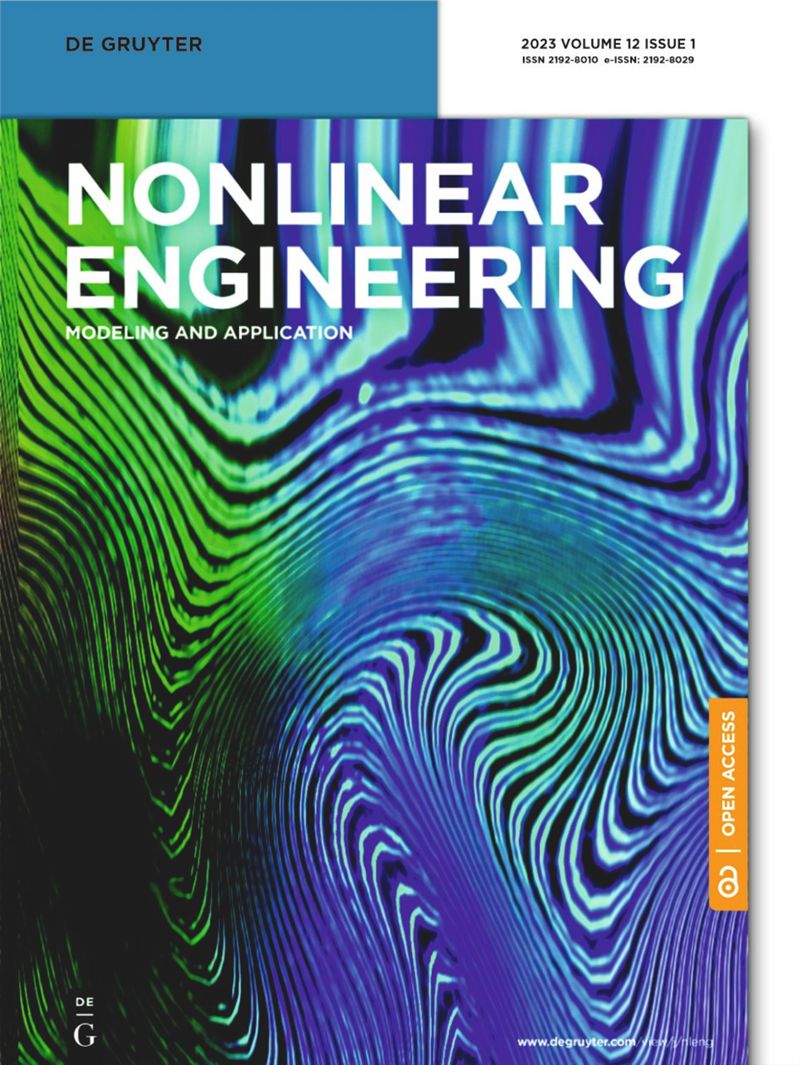多孔可拉伸/可收缩Riga板变形的三级改性纳米流体流动的重叠网格SQLM
IF 2.4
Q2 ENGINEERING, MECHANICAL
引用次数: 1
摘要
摘要流体热性能的改善和能量损失的控制具有同等重要的意义。因此,本研究的目的是分析由可拉伸/可收缩Riga板在不同流动粘度的多孔介质中生成的非牛顿级三级改性混合纳米流体的熵产、滞止点流动和热特性。在本分析中,考虑了一种混合纳米流体的改性,即在传热表征中使用纯净水作为基础流体,并使用三种不同的纳米材料(氧化铝、铜和镍)作为纳米颗粒。此外,模型还考虑了热源/汇和粘性耗散的贡献。通过适当的变换对控制数学方程进行重新建模,得到常微分方程,这些常微分方程可以通过谱拟线性化方法(SQLM)和重叠网格思想方便地求解,从而得到数值解。通过对误差界定理、残差和解误差、计算时间和矩阵条件的讨论,证明了这种方法优于其他方法。不同的控制参数对流动变量的物理意义,速度梯度,热速率,和熵的产生是通过图表和表格仔细审查。该研究的重要发现包括改性的混合纳米流体的温度比单一纳米流体、混合纳米流体和常规三级流体的温度提高更快(更好的热导体),具有更高的Biot数、可变的粘度和热源参数。质量吸力增强流体流动和感兴趣的物理量,但抑制流体温度。可变流体粘度、修正哈特曼数和三级参数的增加可以提高壁面阻力系数,同时降低换热速率,而多孔介质则相反。高可变流体粘度、吸力、粘性耗散、修正哈特曼数和非牛顿参数使系统产生更多的熵。由于改性混合纳米颗粒具有较高的速度和温度,因此建议采用改性混合纳米颗粒技术,以最小的成本影响提高流体的物理特性。从工程和工业的角度来看,该研究对工质的热性能改善具有重要意义。本文章由计算机程序翻译,如有差异,请以英文原文为准。
Overlapping grid SQLM for third-grade modified nanofluid flow deformed by porous stretchable/shrinkable Riga plate
Abstract The improvement in thermal performance of fluid and the control of energy loss are equitably significant. Therefore, the purpose of this study is to analyze entropy generation, stagnation point flow, and thermal characteristics of non-Newtonian third-grade modified hybrid nanofluid generated by a stretchable/shrinkable Riga plate in a porous medium with varying flow viscosity. In this analysis, a modification of hybrid nanofluid is considered by using pure water as a base fluid and three various nanomaterials (aluminium oxide, copper, and nickel) as nanoparticles in the characterization of heat transfer. Furthermore, the contribution of heat source/sink and viscous dissipation are accounted for in the model. The suited transformations are enforced to remodel the governing mathematical equations to produce ordinary differential equations that are conveniently tackled via spectral quasilinearization method (SQLM) along with the overlapping grid idea to yield numerical solutions. The preference of this approach over others has been justified through discussion of error bound theorems, residual and solution errors, computational time, and conditioning of matrices. The physical significance of disparate governing parameters on flow variables, velocity gradient, thermal rate, and entropy generation are scrutinized through graphs and tables. Crucial findings of the study include that temperature of the modified hybrid nanofluid enhances quickly (better thermal conductor) than temperature of single nanofluid, hybrid nanofluid, and conventional third-grade fluid for higher Biot number, variable viscosity, and heat source parameters. Mass suction enhances fluid flow and physical quantities of interest, but suppresses the fluid temperature. An increase in variable fluid viscosity, modified Hartmann number, and third-grade parameters enhances the wall drag coefficient while lowering the rate of heat transfer, and the opposite is true for porous media. More entropy is generated in the system by high variable fluid viscosity, suction, viscous dissipation, modified Hartman number, and non-Newtonian parameters. Owing to high velocity and temperature associated with modified hybrid nanoparticles, modified hybrid technology is recommended in enhancing the physical attributes of the fluid with minimal cost effects. In engineering and industrial point of view, this study can contribute significantly in thermal improvement of the working fluid.
求助全文
通过发布文献求助,成功后即可免费获取论文全文。
去求助
来源期刊
CiteScore
6.20
自引率
3.60%
发文量
49
审稿时长
44 weeks
期刊介绍:
The Journal of Nonlinear Engineering aims to be a platform for sharing original research results in theoretical, experimental, practical, and applied nonlinear phenomena within engineering. It serves as a forum to exchange ideas and applications of nonlinear problems across various engineering disciplines. Articles are considered for publication if they explore nonlinearities in engineering systems, offering realistic mathematical modeling, utilizing nonlinearity for new designs, stabilizing systems, understanding system behavior through nonlinearity, optimizing systems based on nonlinear interactions, and developing algorithms to harness and leverage nonlinear elements.

 求助内容:
求助内容: 应助结果提醒方式:
应助结果提醒方式:


